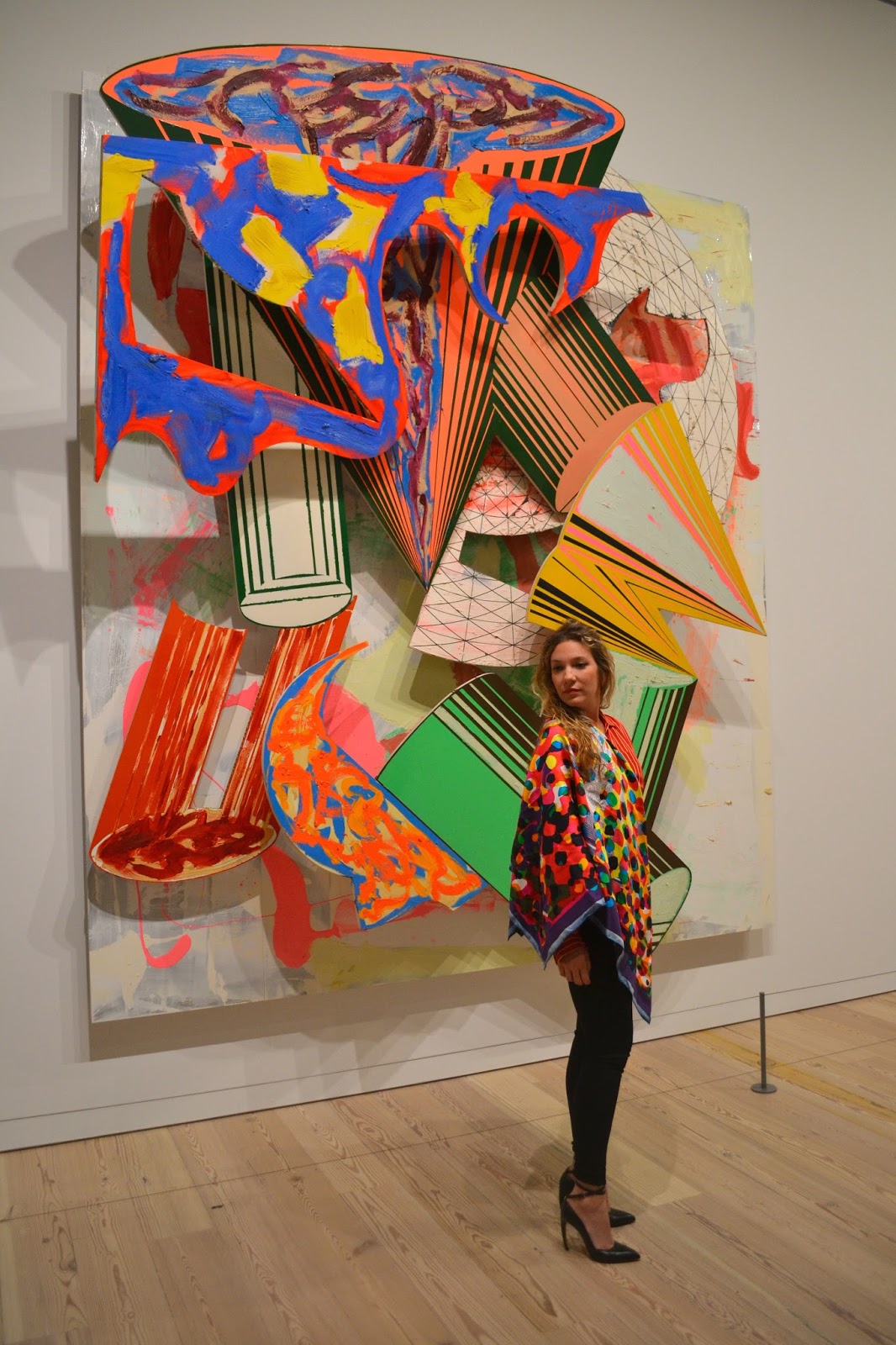"I don't like to say I have given my life to art. I prefer to say art has given me my life." -Frank StellaAs I was perusing the textile rack at a local secondhand store a few years ago, I came across what I could only describe as the most beautiful piece of silk I'd ever seen - which I immediately recognized as a Frank Stella print. Upon closer inspection, I found Stella's signature and the date, and clutched the scarf to my chest as I raced for the cash register, thinking the beautiful piece of silk would vanish from my hands before I could buy it. I did a bit of research and found that the scarf was one of a limited edition of 500 produced by Stella for Barneys in 2004. One of my prized possessions, I couldn't wait to wear the scarf for the opening of Frank Stella's retrospective at the Whitney Museum.
Stella is one of those art world luminaries who has been living and creating art throughout so many different time periods and movements, that it is difficult to categorize his work. He is most well known for his Minimalist works of the 1960s and 1970s, but his more recent work (which I can comfortably describe as Maximalist) has become more and more interesting over the years. The Whitney retrospective gives a high level overview of the artist's oeuvre and delves into some of the pervading themes and just touches on some of the others.
Silk scarf: Frank Stella Limited Edition for Barneys
Silk blouse: Yves Saint Laurent
Jeans: Hudson Barbara
Shoes: Walter Steiger
Photos of me by Meri Feir; other photos by me.





















































